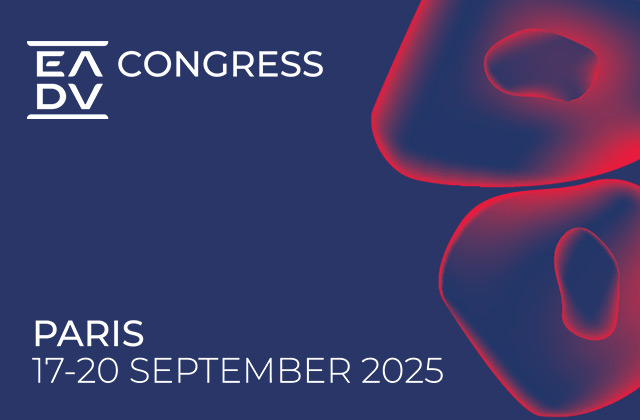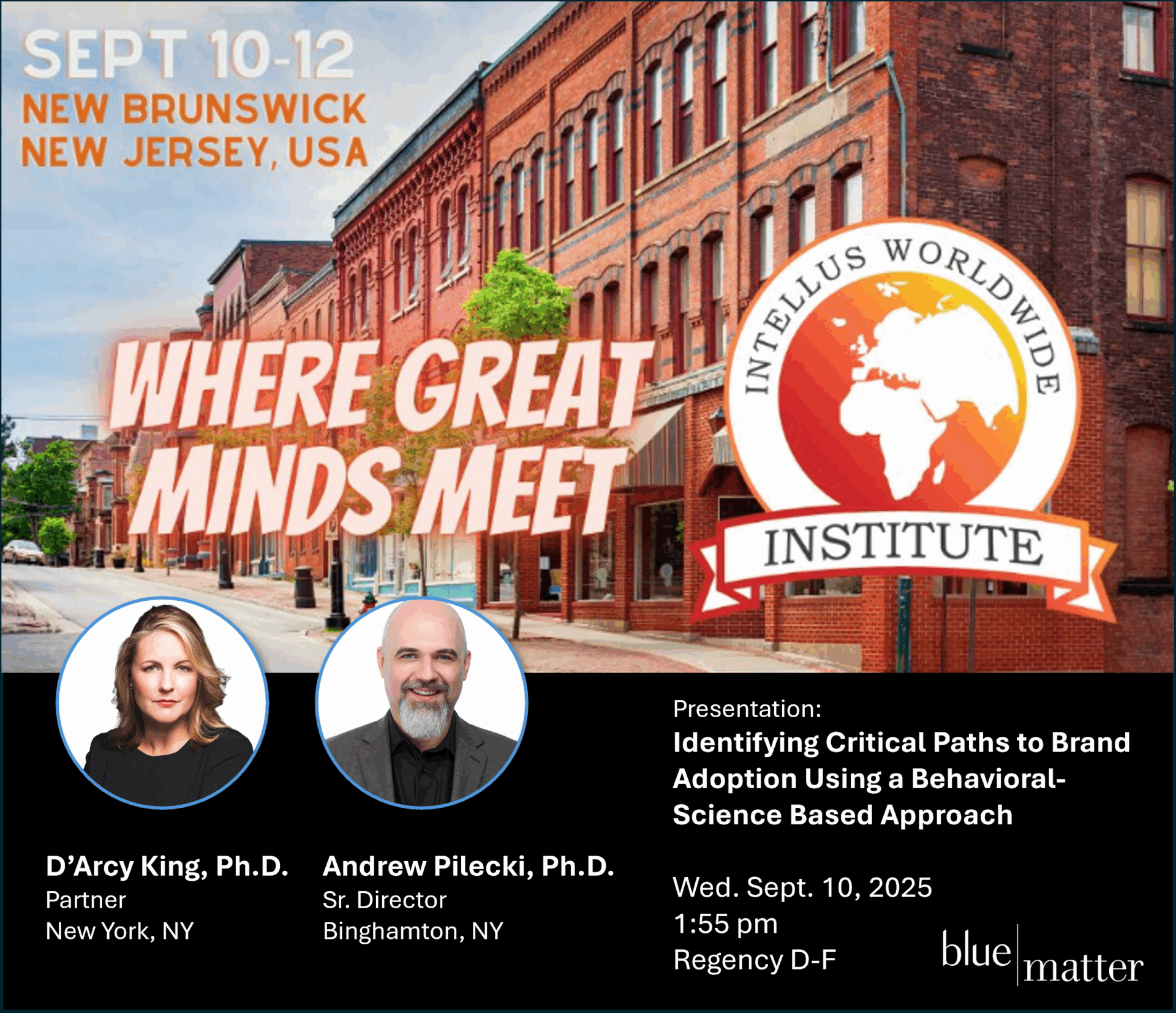Each year, members of the Blue Matter team attend the annual meeting of the American Society of Clinical Oncology (ASCO). This year was no exception, and we were in Chicago from May 31-June 4 for this important event. It provides an unmatched opportunity to connect with colleagues while seeing some of the latest developments in oncology research.
While we couldn’t attend every session, we did make it a point to get to many of them. In this short article, we highlight some of the more interesting themes and developments that caught our attention. Hopefully, it provides a helpful summary for those who couldn’t be there in person, as well as some potentially useful perspectives for those who were on site.
Momentum Continues with New Lung Cancer Data
AstraZeneca shared two back-to-back presentations of data from two important trials:
- LAURA, studying adjuvant osimertinib following concurrent chemotherapy-radiation therapy in unresectable EGFRm stage III non-small cell lung cancer (NSCLC)
- ADRIATIC, evaluating durvalumab as consolidation treatment in limited-stage small cell lung cancer (LS-SCLC) patients with stage I – III inoperable cancer who received concurrent chemoradiation
The LAURA data showed that progression-free survival (PFS) increased greatly, with a mean PFS (mPFS) of 39.1 months vs. 5.6 months on placebo, with a hazard ratio (HR) of 0.16. Overall response rate (ORR) also trended positively, with 57% for patients on osimertinib vs. 33% on placebo. With these data, AstraZeneca is strongly positioned in stage III non-resectable NSCLC with durvalumab in WT EGFR patients (PACIFIC regimen) and osimertinib in EGFRm patients.
ADRIATIC data showed that durvalumab consolidation improved mean overall survival (OS) by almost 2 years, from 33.4 months on placebo to 55.9 months on durvalumab with an HR of 0.73. Mean PFS nearly doubled from 9.2 months on placebo to 16.6 months on durvalumab with an HR of 0.76.
The impressive PFS data seen in both studies were considered to be practice changing, with physicians supporting immediate adoption of LAURA despite the lack of mature OS data. Some physicians even indicated that they have already been using osimertinib in this treatment setting, given the efficacy seen in other lines of treatment. So, from these physicians’ perspective, the LAURA data were more practice-affirming than practice-changing.
Unprecedented Data for Lobrena® (lorlatinib) in ALK+ NSCLC
Long-term follow-up data from Pfizer’s pivotal CROWN study were presented at ASCO. Lorlatinib has been approved since 2018 for the treatment of ALK+ NSCLC and already has Category 1 NCCN status, and the results of this long-term data were eagerly anticipated.
The data presented at this year’s ASCO meeting greatly solidified this medicine’s clinical benefits, with 5-yr mPFS not yet met and a 60% progression free rate at the 5-yr marl. Efficacy of this magnitude has never been achieved before in this setting.
177Lu-PSMA Awaiting Practice-Changing Data and Other Radioligand Therapies (RLTs)
Novartis
Novartis presented a second interim analysis of the PSMAfore study, moving Pluvicto® into the pre-taxane setting in Metastatic Castration-Resistant Prostate Cancer (mCRPC) patients. The data showed radiographic mPFS of 12 months on 177Lu-PSMA vs. 5.6 months on androgen receptor pathway inhibitor (ARPI), HR = 0.43. A third interim analysis showed a favorable OS trend with HR = 0.98, which differed from the 1.16 seen in the previous interim analysis.
The health -related quality of life (QoL) data showed a favorable profile across multiple parameters. All things considered, if the OS data continues to trend positively in a statistically significant manner, physicians indicate that the PSMAfore data will be practice changing in mCRPC patients.
Johnson & Johnson
In addition to Novartis, J&J also presented data for its actinium-based novel RLT, 225Ac-human kallikrein 2 (hK2). In contrast to the currently approved RLTs that are small molecule based, this asset is mAb based. It showed a PSA50 response of 44% and an ORR of 18%.
Actinium is an alpha-emitting particle vs. the beta-emitting lutetium that is the common radioactive isotope used in current RLTs, Pluvicto® and Lutathera®. The benefit that alpha-emitting particles exhibit is that they can be used with little to no shielding, whereas beta-emitting particles require lead shielding. In addition, alpha-emitting particles generate double-stranded breaks, which are more damaging to cancerous tissue when compared to the single-stranded breaks caused by beta-emitters.
Physicians indicated concern with the deaths observed in the J&J asset resulting from interstitial lung disease (ILD), especially with the lack of a clear explanation that can tie the asset components, actinium, the antibody itself, or the target to these deaths. There is a hypothesis that the antibody—which can circulate in the blood for up to three weeks—essentially exposes healthy tissue to toxic radiation. This is a difference from the PSMA targeting small peptide that is eliminated from the circulation quickly, exposing only the targeted cells to the radiation. However, physicians indicate that they are not sure this is the case, as the ILD seen with this asset is not seen with other antibody-based RLTs. This raises suspicions that something about this particular asset causes some type of lung-specific toxicity.
On a side note, actinium appears to be scarce compared to lutetium. Recently, BMS announced that it’s halting enrollment in its clinical trial in GEP-NET patients assessing RYZ101, its recently obtained asset through the RayzeBio acquisition. The reason was a shortage of actinium. This issue indicates the challenges that alpha-emitting, actinium-based radioligand therapies may encounter.
Old and New Antibody-Drug Conjugate (ADC) Targets
AstraZeneca
AstraZeneca was able to share DB-06 data for Enhertu® in second line HER2-low and ultra-low patients against physician’s choice of chemotherapy. The data showed similar PFS benefits across both patient groups of 13.2 months on Enhertu vs. 8.1 months on chemotherapy (8.3 mo. for ultra-low).
The trial recruited patients who had at least one prior line of treatment, including adjuvant endocrine treatment (ET) and CDK4/6i. The strong and consistent data across the two patient populations triggered discussion around the following points:
- In HER2 ultralow patients, there seems to be a rationale to treat them with Enhertu after ET and CDK4/6i rather than chemotherapy.
- Given the consistent outcomes across HER2 low and ultralow patients, is there a need to even test for HER2 expression at all, rather than just start all patients on Enhertu? This question will be answered when the Destiny-Breast-15 trial reads out, in which the minimally viable HER2 expression level will be evaluated. The readout is expected in Q4 of 2027.
Novel Targets
Given the hype around this topic, there is appetite for novel ADC targets. Data from the ASCO conference showcased some candidates. Table 1 provides a summary.
Table 1 – Potential Novel ADC Targets Discussed at ASCO 2024
| Merck KGaA | M9140, a CEACAM-targeting Topo1 linked ADC |
|
|
| AbbVie | ABBV-706, a seizure-related homolog protein 6 (SEZ6) – targeting Topo1 inhibitor linked ADC |
|
|
| Miracogen | MRG004A, a Tissue Factor (TF)– targeting MMAE (monomethyl auristatin E, a tubulin inhibitor) linked ADC |
|
|
The encouraging data in pancreatic cancer patients may be attributed to the role of TF in reshaping the tumor micro-environment and impacting the fibrotic tissue that surrounds the pancreatic tumor.
A Word of Caution?
One session on TROP2 in NSCLC presented data to suggest that there may be reasons to temper expectations despite the considerable potential of ADCs. Ideally, ADCs should be less toxic than the chemotherapeutic payload. However, they often just exhibit a different set of toxicities, but not an overall cleaner profile.
This is related to the fact that there is still considerable work ongoing to find the “goldilocks” level of linker stability and the appropriate therapeutic window. First generation linkers were less stable, leading to premature and systemic payload release and resultant toxicity. The next generation of linkers were perhaps too stable, resulting in challenges finding an appropriate therapeutic window, as well as a novel set of toxicities. The latest platforms continue seeking to optimize this crucial component of ADCs, along with the many other moving parts within these molecules. We saw great progress on this at ASCO, but KOLs recognized the room for improvement.
Response rates should be much better than chemotherapy, but often this isn’t borne out in the data. Combining with immuno-oncology therapies shows promise, but how can we ensure that combinations deliver greater results than the individual components? Understanding patients’ genomic backgrounds will be key to tuning ADC systems and combinations appropriately.
Although these issues were presented in the context of TROP2 NSCLC, it sets the stage for additional work to help ADCs realize their full potential across tumor types and patient populations.
Until Next Time…
We hope readers find this short summary interesting and useful. Later this year, in December, we will attend the annual meeting of the American Society of Hematology (ASH) in San Diego. We’ll be sure to provide a brief summary of that meeting as well. In the meantime, please contact us if you have business needs related to corporate, portfolio, or product strategy.








